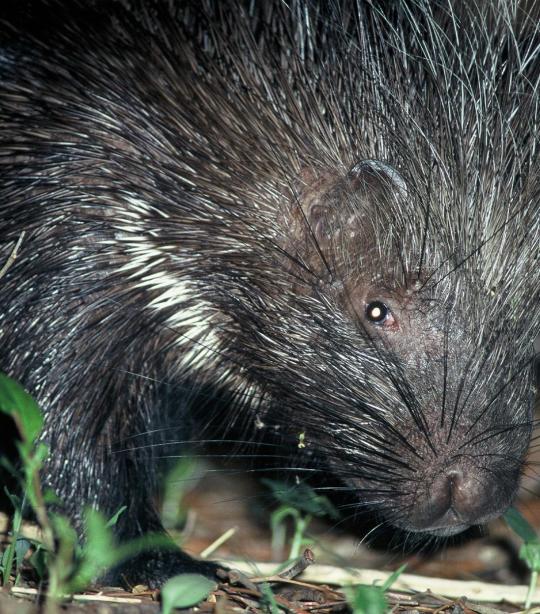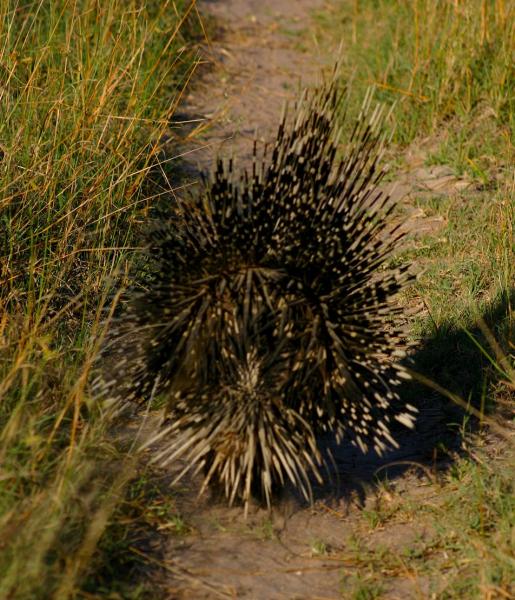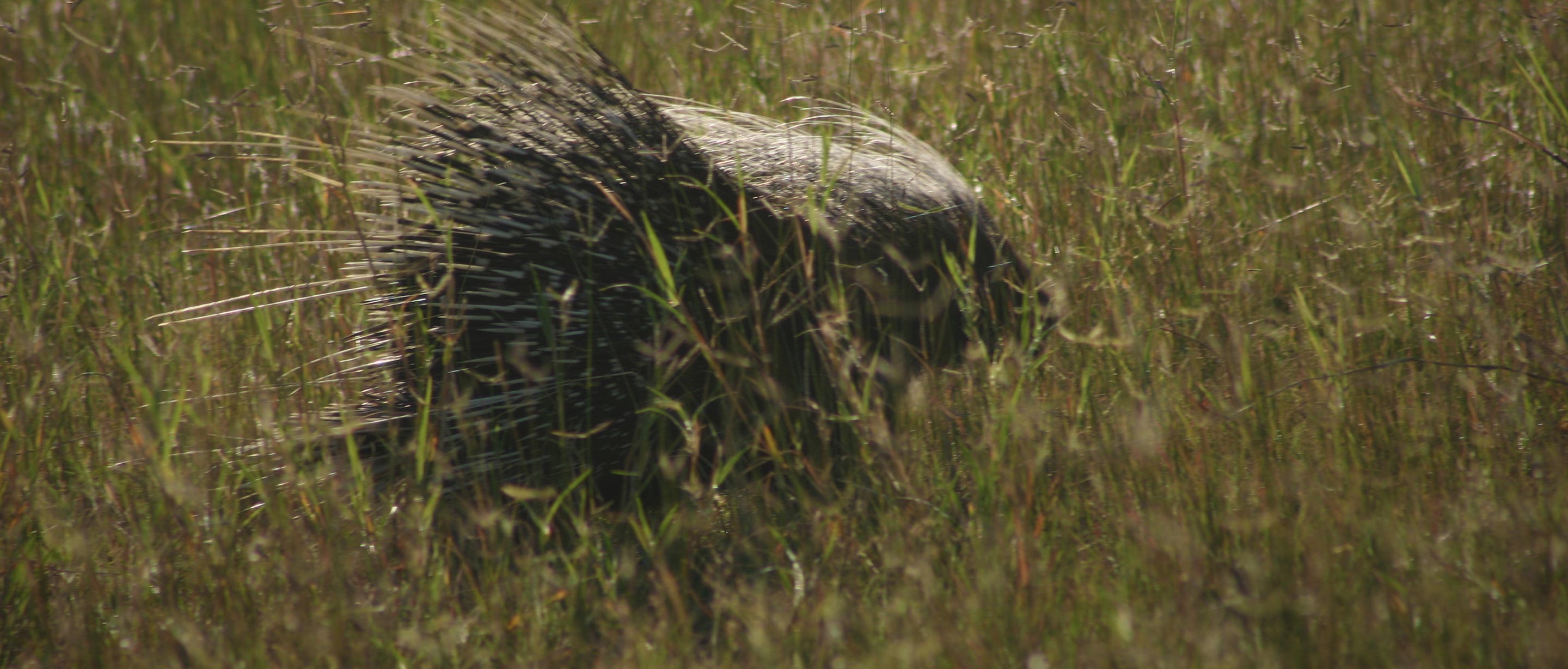What is a porcupine?
The word porcupine means “quill pig” in Latin; however, porcupines are large rodents and have no relation to pigs. Porcupines are the largest and heaviest of all African rodents. The head is roundish and rather domed, with a blunt muzzle and small eyes and ears. The legs are short and sturdy, and each foot has five toes, all equipped with powerful claws. Their most recognizable feature is, of course, its quills. Quill length varies on different parts of the body, ranging from 2.5 to 30.5 centimeters (1 to 12 inches). Usually, the quills lie flat against the body, but if danger threatens, they raise and spread them. Scales on quill tips lodge in the skin like fishhooks and are difficult to pull out. New quills grow in to replace lost ones.
Hystrix cristata (Crested Porcupine); Atherurus africanus (African Brush-tailed Porcupine); Hystrix africaeaustralis (Cape Porcupine)
10 to 30 kilograms (22 to 66 pounds)
60 to 93 centimeters in length (23 to 37 inches)
15 years in the wild; up to 20 years in captivity
Hilly, rocky country, woodland savanna
Herbivorous
90 to 110 days
Pythons, leopards, large owls

Challenges
Human-wildlife conflict threatens porcupines’ existence.
As human populations expand, humans and porcupines find themselves in increasingly close quarters. When porcupine populations close to cultivated areas surge, they can become serious agricultural pests. They are smoked out of their burrows and hunted with spears, nets, or dogs. These practices have eliminated them from densely settled areas.
They are targeted for their quills.
Porcupine quills have long been a favorite ornament and good-luck charm in Africa. The hollow rattle quills serve as musical instruments and were once used as containers for gold dust. In addition to being targeted for their quills, they are illegally hunted for their meat.
Solutions
Our solutions to protecting the porcupine:
African Wildlife Foundation educates communities about the importance of sustainable practices for agricultural and settlement growth by providing training on best practices and incentivizing conservation agriculture when appropriate.
AWF engages local communities to set aside land for wildlife to live undisturbed. In the Laikipia region of Kenya — which has no formal protected areas — we partnered with the Koija community and a private operator to construct the Koija Starbeds Lodge. Koija Starbeds sets aside land for wildlife while, at the same time, creating jobs and income for the local community.


Behaviors
Porcupines like to set up homes in burrows.
These large rodents modify natural shelters among roots and rocks, inhabit holes made by other animals, or dig their own hideaways. These burrows are most commonly occupied in family units.
Females like to give birth in the comfort of their own homes.
The gestation period of the African crested porcupine is about 112 days. Between one and four young are born in the grass-lined burrow. They are well-developed and are born with open eyes. The young leave home for the first time at about two weeks of age, as their quills — soft at birth — begin to harden. They are quite playful and, outside the burrow, they run and chase one another. The young are suckled from six to eight weeks of age and then begin to eat vegetable matter.
The porcupine attacks in reverse.
They warn potential enemies of their defense system when alarmed. Porcupines will stamp their feet, click their teeth, and growl or hiss while vibrating specialized quills that produce a characteristic rattle. If an enemy persists, then they run backward until they ram their attacker with their quills. The reverse charge is most effective because the hindquarters are the most heavily armed, and the quills are directed to the rear.
Diet
They will cheat on their vegetarian diets.
Porcupines primarily eat roots, tubers, bark, and fallen fruit but also have a fondness for cultivated root crops such as cassava, potatoes, and carrots. Sometimes, they will even take carrion back to the burrow to nibble on.
Habitats
Where do porcupines live?
Porcupines are most common in hilly, rocky country, but they can adapt to most habitats — excessively moist forests and the most barren of deserts seem to be the only exceptions. They have even been found on Mt. Kilimanjaro, as high up as 3,500 meters (11,480 feet).



